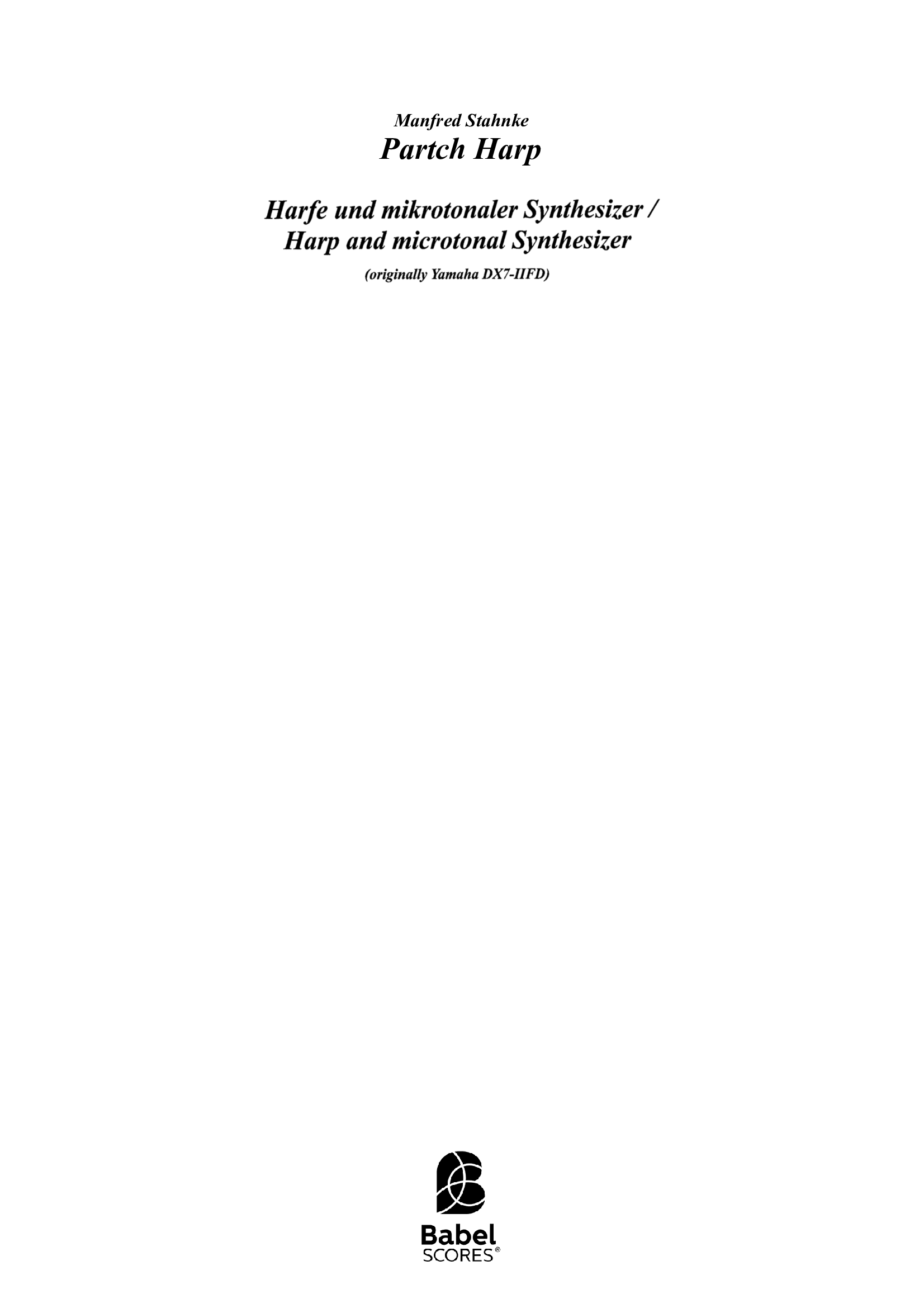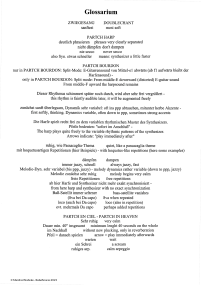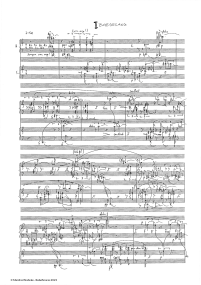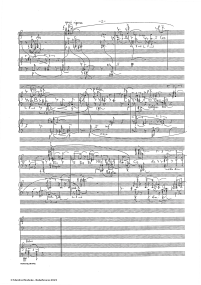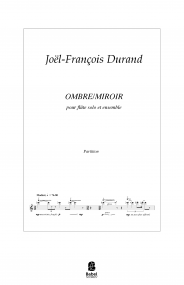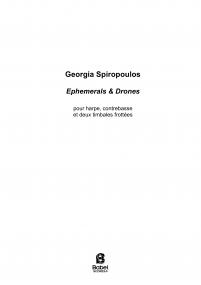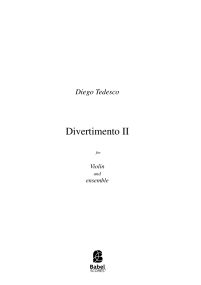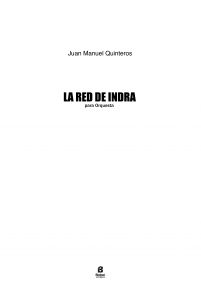Partch Harp
ISMN : 979-0-2325-7467-7
- Login to create your own lists
This piece was written in 1987/89 for a harp in scordatura, containing "natural" just major thirds (5/4) and "natural" just minor sevenths (7/4). The numbers 5 and 7 indicate the partials of a fundamental tone "1" of course.
The synthesizer's tuning follows the harp tuning and allows these just intervals for any played pitch up and down (the tuning is 12th root of 1.956, which means a 12ET of a narrow "non-octave" 1/1.956. The deviation against just 5/4 or 7/4 is less than 1 cent.
The way of thinking in integer numbers looks quite mathematical, but it is very much linked to how our ear is working. Apparently it measures towards "simplicity": If we listen to a so-called "tempered" interval, the ear adjusts these intervals mentally to the simpler forms, and will accept a "distuned" third as a "natural" third with some added beating. In my piece "PARTCH HARP" however, the beatings become a well incorporated part. If the deviation from the simple interval is too big, the ear cannot adjust anymore and detects a "wrong" interval. This is especially true for octaves and fifths, the very simple 2/1 and 3/2 proportions. Imagine three "just thirds" on top of each other C-E-G#-B#. The summed up deviation from an octace C-B# is almost a quartertone. My synthesizer tuning gives minor seconds "short" by 3.5 cents. If you superimpose 7 of them to get a fifth, this strange "fifth" misses 7x3.5=24.5 cents, a very audible eighth tone.
The strange - or charming - feature of PARTCH HARP is that the harp is tuned in perfect octaves, and the synthesizer not. By this I get a strangely drifting vessel in an ocean of asymmetries.
As to the title: Harry Partch (1901-73) invented a just tuned 43 tone scale, and to play it, he built his own instrumentarium.
The movements are:
Zwiegesang - double chant
Partch Harp
Partch Bourdon
Partch en ciel
Synthesizer
Pages - 20

